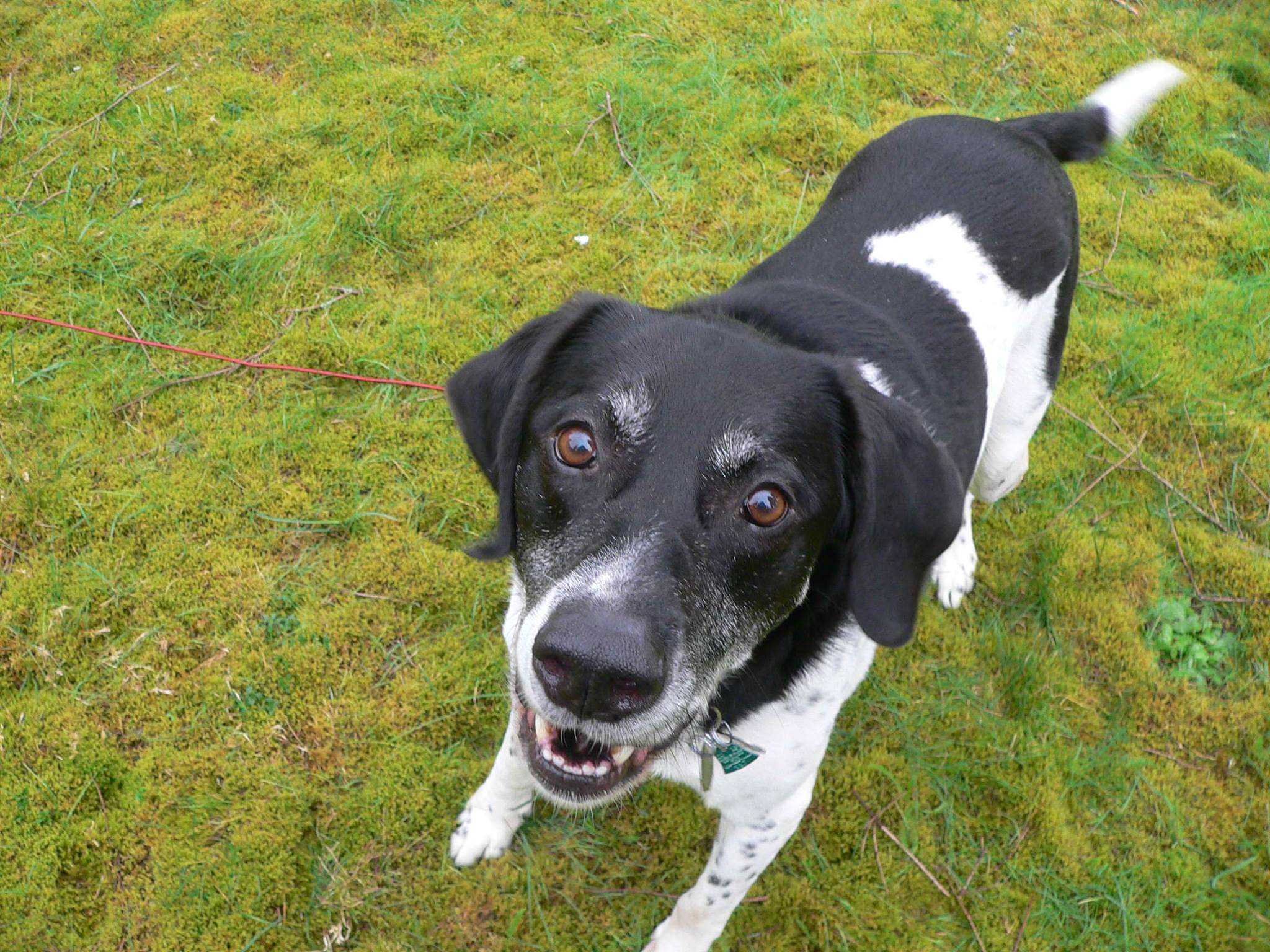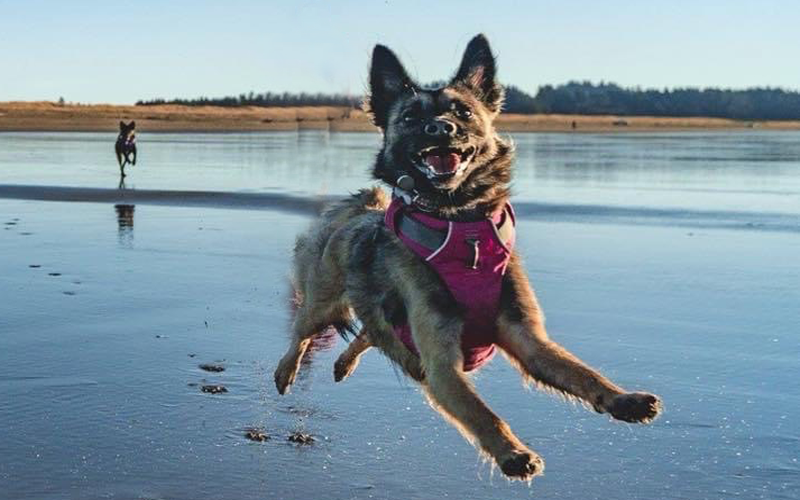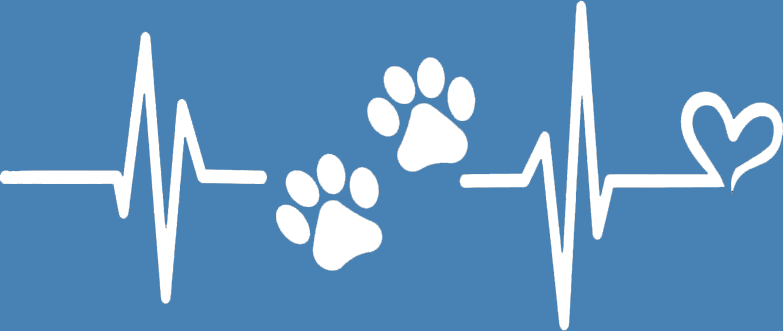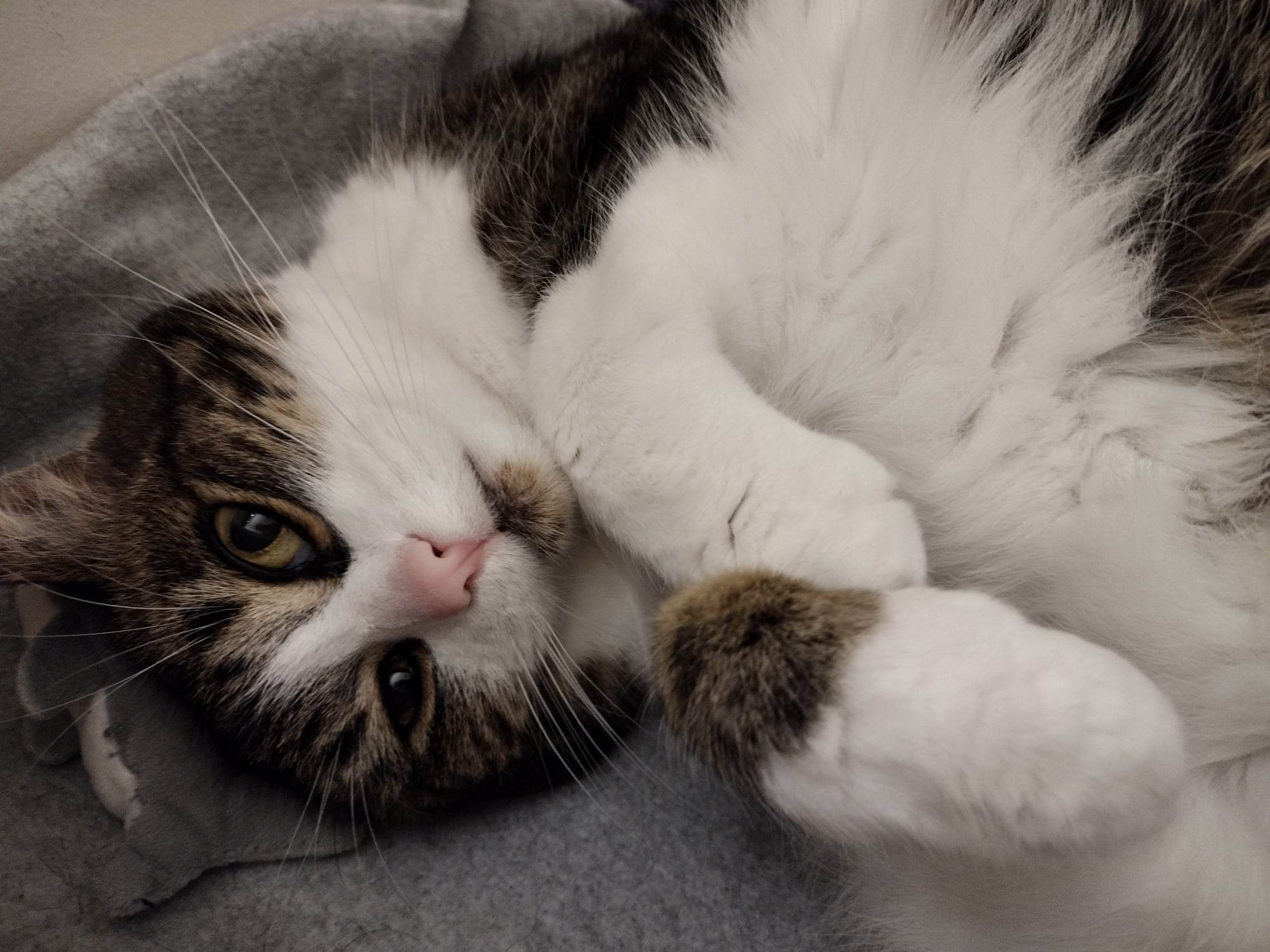

Just like us, our pets can suffer from many ailments including tight or weak muscles, areas of tension, soreness and fatigue. They can also suffer from chronic and/or age related conditions such as arthritis, epilepsy, and cancer.
As awareness regarding the value of massage therapy grows, more and more people are discovering (for themselves and for their animals) the amazing benefits of massage.
When we think of the touch used in massage, we usually think of it as affecting primarily the physical body. When someone asks about benefits, the most obvious responses and the easiest to give are that massage increases circulation, enhances flexibility, reduces pain and improves metabolic efficiency.
However, massage also supports the mind/body connection to promote natural function and contribute to the overall wellness of your dog or cat. All animals have thoughts, feelings, and an intuitive drive to achieve wellness and balance. Massage can provide emotional stability by balancing hormones and raising the entire body functioning to a higher, more effective being.
Please read below for key attributes in which massage can have direct or indirect influence on your animal’s body and mind.
 The skeletal muscular system produces movement and heat, stabilizes joints and maintains posture. The action of movement is generated by electrical impulses traveling along the motor nerves within the muscle. Muscles are encased by fascia sheaths that form and become tendons creating attachment sites to the bones. Smooth muscle is
located in the walls of the organs and requires no conscious thought.
The skeletal muscular system produces movement and heat, stabilizes joints and maintains posture. The action of movement is generated by electrical impulses traveling along the motor nerves within the muscle. Muscles are encased by fascia sheaths that form and become tendons creating attachment sites to the bones. Smooth muscle is
located in the walls of the organs and requires no conscious thought.
The Skeletal System acts as a structural frame for the body, providing a lever system for movement. The skeletal system also provides protection for vital organs and acts as a storage and production site for minerals and blood cells. Ligaments attach bone to bone providing protection of the skeleton and joints. Please note; with massage there is never direct manipulation or adjustments to the skeletal structure.
The Nervous System is considered to be the glue that binds the body and mind with its main component being the Central Nervous System (brain and spinal cord.) It is responsible for the animal’s ability to adapt and respond to stimuli. Massage can not only influence changes on a physical level but a mental and emotional level as well. Slow rhythmic massage can calm and soothe while an increased tempo can stimulate.

What is Proprioception? It is commonly known as muscle memory as it relates to massage.
Although skeletal muscle requires conscious thought, we are able to complete many tasks on “auto pilot” such as walking, or riding a bike once that task has been learned. When the body is injured, this can disrupt the muscle memory. The body protects itself and compensates for the insult. Bearing weight on another limb perhaps. Once the injury has passed and/or healed, it’s quite common for the compensation patterns to continue when it’s no longer necessary, causing imbalance.
There are several massage techniques to help with proprioception to simply remind the body of the normal & ideal movement it once knew.
The Lymphatic System is a delicate transport system which collects and disposes of debris from bacterial and viral invaders. Lymph nodes are located at intervals along the body in which cells inspect and attack foreign substances. The lymphatic system is a specialized component of the circulatory system, picking up fluids exchanged by capillaries. Proper function of the lymphatic system is dependent on respiration, digestion and muscular effort to move lymph fluid through the body.
The Circulatory (Cardiovascular) System is a two way transport system in which the heart pumps oxygenated blood via the lungs, nutrients and hormones to the body via the arteries, which is then returned to the heart by veins. It carries waste products and toxins to the liver and kidneys for processing and removal from the body.

The Digestive System processes food and drink into absorbable nutrients which enter the bloodstream for distribution to the body. Indigestible food is eliminated as feces. The liver and pancreas play a vital role in the digestive process. The digestive system is a major component of the immune system.

The Respiratory System mainly consists of the lungs (and diaphragm) which removes carbon dioxide from the blood and maintains oxygen supply.
The Integumentary System is made up of the skin, hair, and nails. The skin protects underlying tissue and houses sensory nerve receptors which convey information on the external environment as it pertains to touch, temperature regulation and pain.

The Endocrine System is the system of glands responsible for metabolism and for sending hormones into the circulatory system. The endocrine system works closely with the nervous system to control many physiological processes. Massage can benefit animals with conditions such as hypothyroidism.
The Urogenital System consists of the urinary and reproductive systems. They both share a common outlet to the exterior of the body. The Urinary system is composed of the kidneys and bladder and is responsible for maintaining fluid balance and PH of the body, and also filtering and removing waste product.